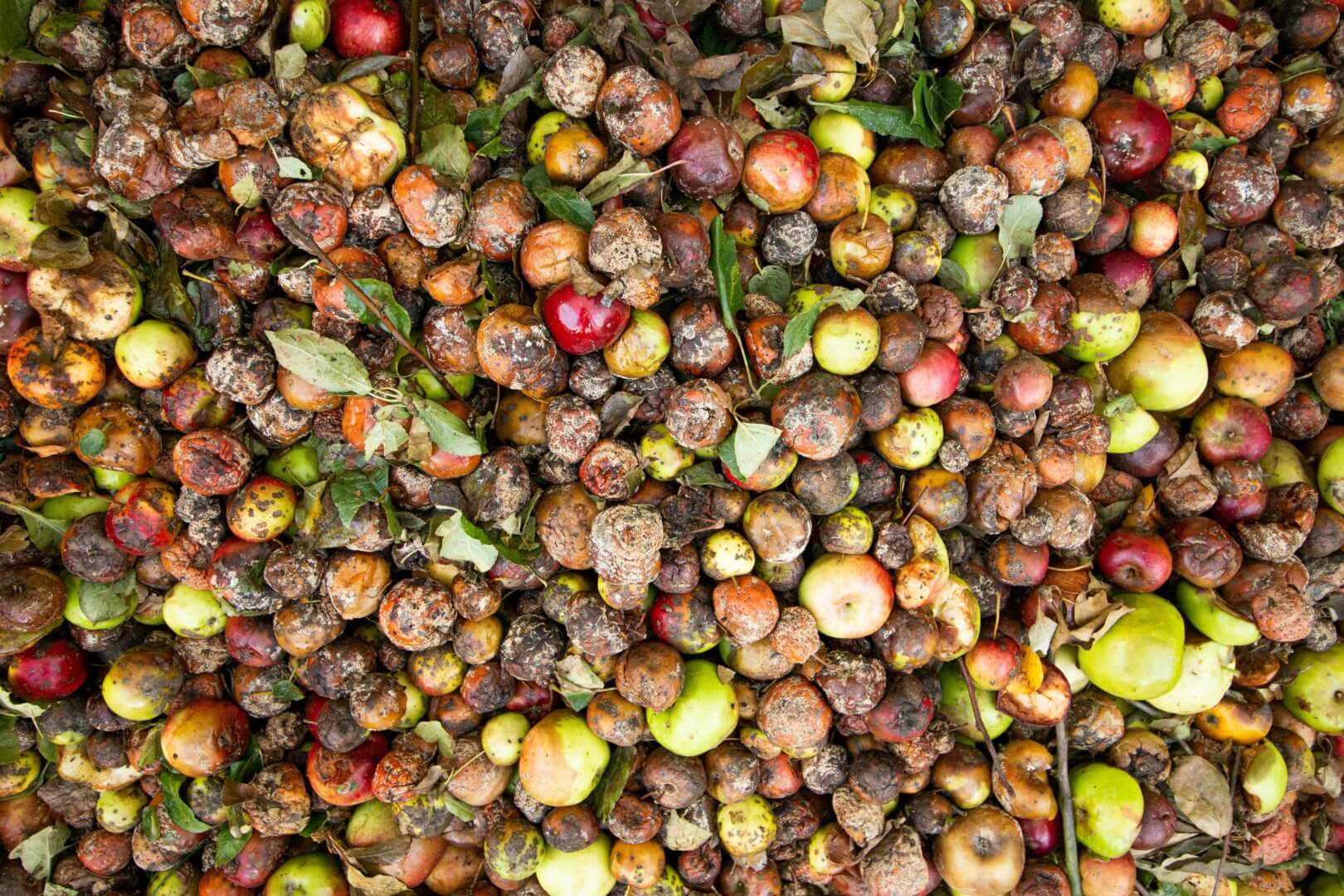As the last few weeks have once again made shockingly clear, the next century will be one where humanity has to adapt to increasingly extreme weather events as a result of global warming. We are in crisis, and need to employ all the means we can to prepare for the disruptions we know are on the horizon — including gene editing.
This is the backdrop for the pre-Summit held in Rome on July 26-28, as a prelude for the UN’s Food Systems Summit taking place in September. And it is also the concern behind the just-published World Resources Institute report: Food Systems at Risk: Transformative Adaptation for Long-Term Food Security. It is becoming clear that it will be just as important to transform our agriculture as it will be to invest in carbon capture and renewables. With ideas like One Health, Agroecology, nature positive production and a rebalancing of power between consumers and producers being spoken about this week, there is yet another technological solution with the potential to help us weather the storms we know are coming: gene edited crops.
The last decades have seen astonishing advances in our understanding of genetic modification, with technologies like CRISPR-Cas able to precisely edit the genes of a crop in the span of a single generation. Compared to selective breeding, which has been compared to “shuffling the genetic deck,” gene editing is exact, able to manipulate the genetic material on the scale of a single part of a single gene and achieved in a fraction of the time it takes to carry out selective breeding.
Investment in and exploration of this technology has been mired in the fear and suspicion GMOs have faced since their less-than-glorious advent in the 1980s. The first examples of genetic modification were not designed to benefit the planet or the health of the consumer. They were created to enable Big Ag — the global agriculture and food industry — to cut corners. Herbicide-resistant crops, for example, meant that herbicide could be used liberally on swathes of land, ruining biodiversity and posing threats to human health. Genetic Modification was bundled into the long list of harmful practices Big Ag still uses today: toxic monoculturalism, overuse of pesticides, herbicides, and fertilisers, animal cruelty — the list goes on.
This does not have to be the case now. Increasingly, examples of genetic editing used to benefit the environment and the consumer have been developed by fringe academics. With new technologies like CRISPR-Cas, not only has our ability to be precise with genetic editing improved, but so has our ability to know the effects the changes have had. It is rare that a technology arises at the same time as the means to regulate it successfully, but CRISPR-Cas is one great example.
UK’s Department for Environment, Food, and Rural Affairs (Defra) need to emphasise the difference between Genetic Modification practised in the 1980s, and the kind being done today. Part of the reason Genetic Modification faces such entrenched resistance is a simple lack of knowledge about what genes actually are, and the overshadowing fear of Dr. Frankenstein scientists with questionable motives making monsters in a lab.
Gene Editing Today: How it is Different
As this brilliant article by the New York Times makes clear, the people pursuing genetic editing for health and environmental benefits today are as far from the above as they are from the cost-cutting and unscrupulous world of Big Ag. At the moment there is so little money in it, and so little chance of your product ever making it to market, that there is no space for the profit motive and crass calculations. It is being pursued by academics like the Norwich scientist Cathie Martin who declares: “I’m worried about people’s health! But in people’s minds it’s all Dr. Frankenstein and trying to rule the world.”
Not only is the entrenched fear of the technology not justified when one looks at the kind of people involved in gene editing, but it increasingly does not hold up to the scientific consensus. In 2016, The National Academies of Sciences, Engineering and Medicine (NASEM) published a comprehensive report which ‘‘Found no substantiated evidence of a difference in risks to human health between current commercially available genetically engineered (GE) crops and conventionally bred crops, nor did it find conclusive cause-and-effect evidence of environmental problems from the GE crops.”
In fact, the report found that “There is some evidence that GE insect-resistant crops have had benefits to human health by reducing insecticide poisonings.” Clearly a result of using less (or even no) chemicals on the crops thanks to reliance on edited genes.
The popular opposition to gene editing technology looks increasingly strange when we put it into context with other farming practices that are not treated with such staunch resistance; while there is little scientific evidence to suggest that genetically edited crops have a negative impact on human health or the environment, there is lots of evidence that the chemicals used as insecticides and herbicides have a negative impact on both.

As we expect the doors to gene editing to open in the UK, the Department for Food, Agriculture, and Rural Affairs has the opportunity to radically deviate from the EU’s prohibitively expensive and outdated regulatory process. Rather than being bundled into the list of very legitimate reasons to suspect agricultural technologies used by Big Ag, gene editing should be seen as a potential solution to problems in the industry.
Really this process is an acceleration of something as old as life — genetic adaptation to an ever-changing environment.
Defra’s focus should be on the need to rapidly innovate towards a world in a climate crisis. As the report from NASEM advises, regulatory processes should focus on products and not processes. NASEM argues that “-omics technologies” — genomics, transcriptomics, proteomics, and metabolomics, all used to analyse genetic code and perform functions on them — “will be critical in enabling these regulatory approaches,” approaches that were not possible in the 1980s.
A part of the evaluation that feeds into regulatory processes should look at the motive for a crop’s development, and assess the projected environmental effects of a gene-edited crop. UK AID budgets could also be usefully channeled into research for drought and heatwave resistant crops.
Related Articles: How to Transform Food Systems in the Face of Climate Change | The Future of Bioethics: Organ Transplantation, Genetic Testing, and Euthanasia | Three Ways to Avoid a Crisis Amid Soaring Food Prices and Rising Hunger
As the UK leaves the EU the Conservative government is proclaiming a bonfire of red tape. In his very first speech as prime minister, Boris Johnson promised to “liberate the UK’s extraordinary bioscience sector from anti-genetic modification rules.” Making gene editing easier is one step in the right direction. The next is enabling and encouraging research into crops the world already desperately needs, while educating consumers about the benefits of this technology, and myth-busting the belief that it is profane, or unnatural.
Really this process is an acceleration of something as old as life — genetic adaptation to an ever-changing environment. With our technology we have found a way to isolate the site in which these changes are encoded, the place that allows these changes to be reproduced through time, and perform deliberate, precise, and slight changes to massively accelerate a random natural process that would have otherwise taken thousands of generations. It is not a magic bullet, but due to its stigmatisation, prohibitive regulation, and subsequent lack of investment, we have not yet nearly explored its full potential.
The pace of change required to reach net-zero by 2050 is only going to be met with such technologies — we do not have time, and nor does the natural world, to adapt to the climatic extremes we know are coming. Let’s hope Mr Johnson’s promise to “liberate” the sector goes the right way.
Editor’s Note: The opinions expressed here by Impakter.com columnists are their own, not those of Impakter.com. — In the Featured Photo: The heatwave on the West Coast of North America on the 29 June 2021. Featured Photo Credit: European Space Agency.














